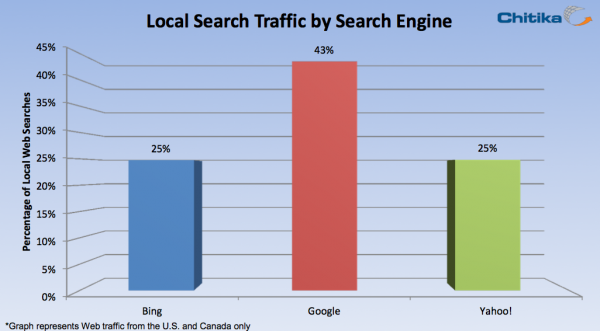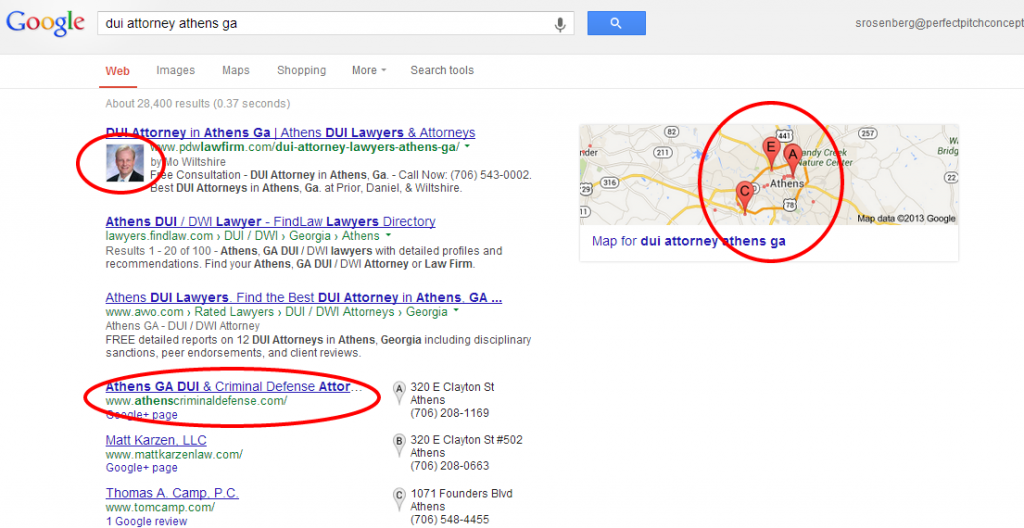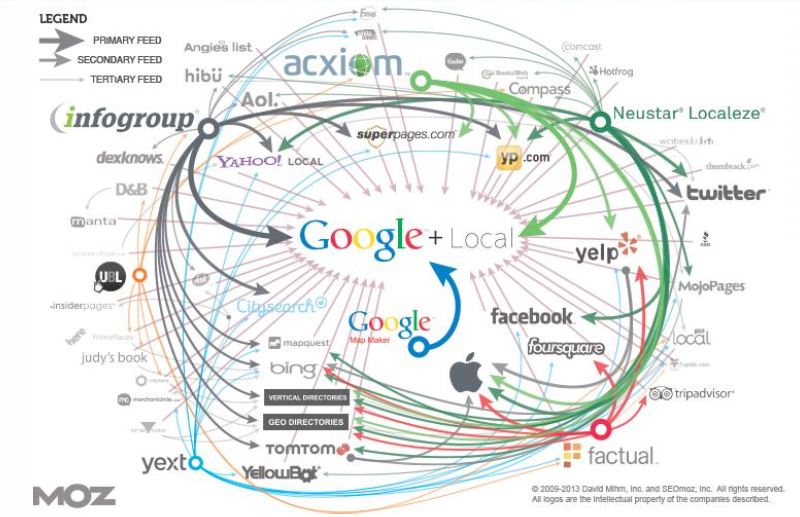We get a lot of questions about how to show up on phones or PCs when people use Google to find local businesses. That’s understandable, since 43% of total Google searches are local. Of those, 50% are on mobile phones. In other words, loads of folks are using search engines to find the services you provide – but are they finding you?

See Local Search for Yourself
If you’re not sure what I’m talking about, below is a local example. On average, there are 70 searches a month for “dui attorney athens ga.” We hope you don’t need one of those, but clearly there’s a demand. Every single one of those searches is a potential lead, and represents a “motivated buyer” prospect that TV, radio, and print can only dream about.

So, why is that one guy’s picture showing up? Who’s featured on the map, and why did that one firm win the “A” position? And if you’re one of the other (regrettably, unfeatured) DUI attorneys, how do you go after those plentiful leads? These are all wonderful questions, and they all have to do with Local Search Optimization.
What Affects Local Search?
There are literally dozens of factors that influence local search, and we aim to work through them in this blog. Everything from page titles and geography to the quality of reviews and inbound links matter. It can get a bit overwhelming, but everything has to start somewhere, right? We believe it starts with a NAP. Unfortunately, not the pleasant, sleepy kind.
Time for Your NAP
NAP, short for Name, Address, Phone, is something you already have, but likely aren’t leveraging. Spreading this and other information about your business (like your industry category and website url) consistently around the web helps your local search performance. That’s because by featuring your business in various directories and review sites, you are increasing the confidence that search engines have in your business listing, not to mention the chances of people finding you.
Make Your NAP Matter
Don’t worry, I’m not about to suggest that you manually add your NAP information to all the hundreds of business sites on the web, in directories like Yellow Pages, Yelp, and CitySearch. Turns out, these directories along with search engines rely on Business Registration Managers (BRMs). All that NAP info has to come from somewhere, right?
BRMs distribute verified business listing information all over the web, which offers you an opportunity to go straight to the source. We recommend adding (or claiming) your listing at each of the major BRMs: Infogroup, Acxiom, Neustar Localeze, and Factual. Most have free or affordable entry-level options.
How do you currently measure up? GetListed.org is a great start.

Infographic credit: Moz.
As the above infographic demonstrates, information at these BRM sources disseminates throughout the web and ultimately supports Google+ Local, the king of local search. Hence why local search starts with a NAP!
For more information on local search ranking factors, check out David Mihm’s excellent report on 2013’s local search ranking factors.

